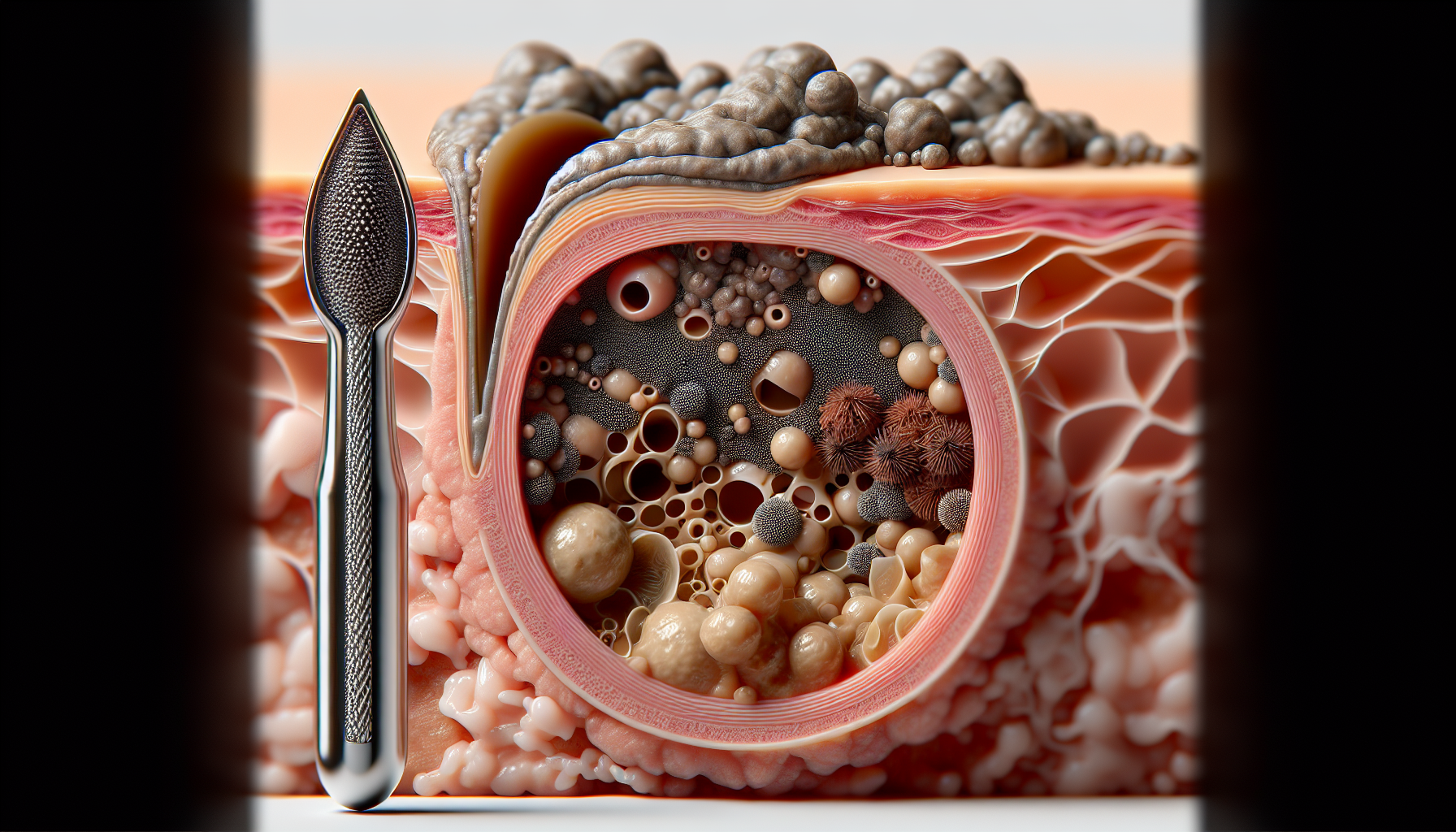Have you ever wondered what exactly a blackhead is made out of? It’s a question that many people have pondered, and today we’ll uncover the answer. Blackheads, those pesky little blemishes that can appear on our skin, are actually a result of clogged pores. The main culprit? Sebum, an oily substance that our skin produces. When sebum mixes with dead skin cells and other debris, it can get trapped in our pores, leading to the formation of a blackhead. But what exactly is sebum and why does it clog our pores? Let’s explore further to find out.
What is a blackhead made out of?
The basics of blackheads
If you’ve ever looked closely at your skin, chances are you’ve come across a blackhead or two. Blackheads are a common type of acne, appearing as small, dark bumps on the surface of the skin. But have you ever wondered what exactly these pesky little bumps are made out of? Understanding the composition of blackheads can help us better comprehend how they form and how to effectively prevent and treat them.
Formation of blackheads
To understand what blackheads are made out of, we need to first understand how they form. Blackheads are a type of comedone, which is essentially a clogged pore. Pores are tiny openings in the skin that release oil, known as sebum, to keep the skin moisturized. However, when a pore becomes blocked with debris, dead skin cells, and excess oil, it can lead to the formation of a blackhead.
Sebum: The main component
Sebum plays a crucial role in the development of blackheads. It is an oily substance produced by the sebaceous glands, which are located beneath the surface of the skin. Sebum helps to lubricate and protect the skin. When there is an overproduction of sebum, or if the sebum becomes too thick and sticky, it can mix with dead skin cells and other impurities to clog the pores and form blackheads.
Keratin and dead skin cells
Another important component of blackheads is keratin, a protein that is abundant in the skin and hair. As skin cells naturally shed, the dead skin cells can mix with sebum and keratin within the pore, leading to the formation of a plug. This plug, if exposed to air, can oxidize and turn black, hence the name “blackhead.”
Bacteria and inflammatory response
While sebum, keratin, and dead skin cells form the bulk of a blackhead, they can also attract and trap bacteria within the pore. The presence of bacteria can trigger an inflammatory response in the skin, leading to redness and swelling. This inflammatory response can exacerbate the appearance of blackheads and make them more noticeable.
Factors that contribute to blackhead formation
Now that we understand the basic components of blackheads, it’s important to consider the factors that contribute to their formation. Blackheads can develop due to a combination of hormonal influences, environmental factors, and skincare and hygiene practices.
Hormonal influences
Hormonal changes, particularly during puberty, can increase the production of sebum. This excess sebum production can make individuals more prone to blackheads and acne breakouts. Hormonal imbalances that occur during menstruation or pregnancy can also contribute to the formation of blackheads.
Environmental factors
Environmental factors such as pollution and humidity can also play a role in the development of blackheads. Pollution can clog the pores and exacerbate the buildup of sebum and dead skin cells, while high humidity can increase the stickiness of sebum and make it more likely to clog pores.
Skincare and hygiene practices
Skincare and hygiene practices can significantly impact the formation of blackheads. Failure to cleanse the skin properly can allow sebum, dead skin cells, and other impurities to accumulate on the surface of the skin, increasing the likelihood of blackheads. Using harsh or comedogenic (pore-clogging) skincare products can also contribute to the development of blackheads.
Preventing and treating blackheads
Fortunately, there are several steps you can take to prevent and treat blackheads. Establishing a consistent skincare routine is key. This includes cleansing your face twice a day with a gentle, non-comedogenic cleanser to remove excess oil and debris. Exfoliating regularly can help remove dead skin cells and unclog pores, but be careful not to overdo it, as excessive exfoliation can irritate the skin and worsen blackheads.
Additionally, using non-comedogenic skincare products and avoiding heavy, oily cosmetics can help prevent the formation of blackheads. Applying a topical retinoid, such as adapalene or tretinoin, can also be beneficial in reducing the appearance of blackheads by promoting cell turnover and preventing pore clogging.
For more stubborn blackheads, professional treatments such as chemical peels, microdermabrasion, or extractions performed by a dermatologist or esthetician may be necessary. These treatments can effectively remove blackheads and improve the overall appearance of the skin.
In conclusion, blackheads are primarily composed of sebum, keratin, dead skin cells, and bacteria. Understanding the formation and composition of blackheads can help us take the necessary steps to prevent and treat them effectively. By adopting a consistent skincare routine, paying attention to hormonal and environmental factors, and seeking professional help when needed, you can minimize the presence of blackheads and achieve clearer, healthier skin.
